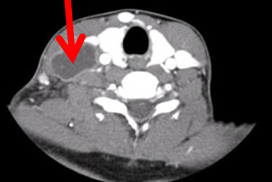Summary
Definition
History and exam
Key diagnostic factors
- presence of risk factors
- enlarged lymph node
- pleuritic chest pain
- skeletal pain
- urinary symptoms
- abdominal swelling
- abdominal pain
- headache
Other diagnostic factors
- cough
- altered mental status
- neurological symptoms
- hepatomegaly
- abnormal chest examination
- fever
- weight loss of more than 10% body weight
- anorexia
- malaise
- night sweats
- dyspnoea
- asymptomatic
- erythema nodosum and erythema induratum
Risk factors
- exposure to TB
- born in Asia, Latin America, or Africa
- HIV infection
- immunosuppressive medicines
- haematological or head/neck malignancy
- end stage renal disease
- apical fibrosis
- intravenous drug use
- female sex
- Asian, black, and Native American ethnicity
- malnutrition
- alcoholism
- diabetes
- cirrhosis
- high-risk congregate settings
- low socioeconomic status
- very young age
Diagnostic investigations
1st investigations to order
- chest x-ray
- sputum smear
- sputum culture
- FBC (full blood count)
- lymph node fine-needle aspiration
- pleural fluid analysis
- ascitic fluid analysis
- bone films
- cerebrospinal fluid analysis
- urinalysis
- nucleic acid amplification test (NAAT)
Investigations to consider
- lymph node biopsy
- pleural biopsy
- synovial biopsy
- liver biopsy
- bone marrow biopsy
- blood culture
- peritoneal biopsy
- gastric aspirate
- bronchoscopy
- thoracoscopy
- drug susceptibility testing
- genotyping
- HIV test
- lateral flow urine lipoarabinomannan (LF-LAM) assay
- empiric treatment
- CT scan chest or abdomen
- abdominal ultrasound
- colonoscopy
- pericardial fluid analysis
- pericardial biopsy
- tuberculin skin testing
- interferon-gamma release assays
- TB antigen-based skin tests (TBST)
Treatment algorithm
latent TB infection: non-pregnant
latent TB infection: pregnant
active TB: non-pregnant, HIV-negative
active TB: non-pregnant, HIV-positive
active TB: pregnant
Contributors
Authors
David J. Horne, MD, MPH

Associate Professor
Division of Pulmonary, Critical Care, and Sleep Medicine
University of Washington
Seattle
WA
Disclosures
DJH declares that he has no competing interests.
Masahiro Narita, MD

Professor of Medicine
Division of Pulmonary, Critical Care, and Sleep Medicine
University of Washington
Co-Founder
Firland Northwest TB Center
Seattle
WA
Disclosures
MN declares that he has no competing interests.
Peer reviewers
Carlos Acuña-Villaorduña, MD
Infectious Diseases Physician
Boston University Medical Center
Boston
MA
Disclosures
CA-V declares that he has no competing interests.
James Shepherd, V
Infectious Disease Consultant
Yale University School of Medicine
New Haven
CT
Disclosures
JS declares that he has no competing interests.

Differentials
- Lymphoma
- Non-tuberculous mycobacteria lymphadenitis
- Sarcoidosis
More DifferentialsGuidelines
- Guidelines for prevention and treatment of opportunistic infections in adults and adolescents with HIV: Mycobacterium tuberculosis infection and disease
- Guidelines for prevention and treatment of opportunistic infections in adults and adolescents with HIV: Mycobacterium tuberculosis infection and disease
More GuidelinesPatient information
Tuberculosis
BCG vaccination
More Patient informationVideos
Diagnostic lumbar puncture in adults: animated demonstration
Abdominal paracentesis animated demonstration
More videosLog in or subscribe to access all of BMJ Best Practice
Use of this content is subject to our disclaimer
